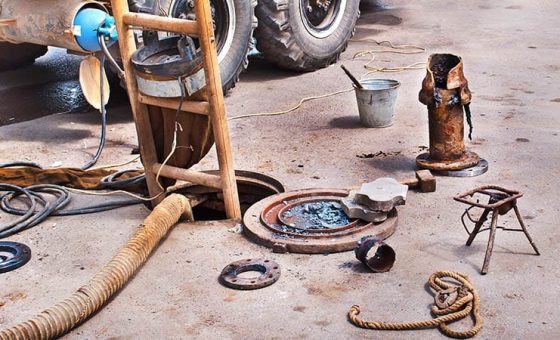Views
Diabetes – also known as the silent killer – isn’t just the hiking of blood sugar. It can come with a lot of other things too, that can turn out to be problematic. Foot problems are among them. If not taken care of on time, they can turn into ulcers, for which you will need help from a podiatrist or an orthopedic surgeon. Here is everything you need to know about foot ulcers related to diabetes.
What Is A Diabetes-Related Foot Ulcer?
Diabetes-related foot ulcer is a sore and open wound that mostly occurs on the foot, either on the base of the foot near the heel or the arch of the foot, or it can also be on the top of the foot on the sides.
Usually, people with diabetes are prone to getting these foot ulcers. Basically, when a person suffers from diabetes, the blood circulation is heavily affected over time. This is because of the deposition of high blood sugar in the veins as well as the general thickening of the blood.
This can cause the wounds to not heal at all or at least they will take plenty of time to do so. This can also put the patients at risk of an infection, since the ulcer is an open wound and you don’t want things to go down that route.
This is why diabetic foot ulcers are so dangerous. They will make you immobile and there may come a time when you see the foot to lose sensation and also blacken over time. This means that the blood circulation has stopped and that is really bad if you think about it. In very severe cases, to avoid spreading the infection or the possibility of gangrene, the foot has to be amputated.
This is really bad, because you might be left incapable for the rest of your life. About 10 to 15% of diabetes patients can fall victim to a diabetes-related foot ulcer and this is really alarming. There is no telling what could cause it or aggravate it in the long run, and whoever has diabetes will suffer from serious ulcers at one point in their lives, especially if they have really unregulated blood sugar levels and fail to control them.
However, if you stay proactive, you can control it. Just as every back pain doesn’t need a surgery, every diabetes-related foot problem doesn’t result in amputation.
Causes Of Diabetic Foot Ulcers
One of the most common causes of diabetic foot ulcer is, of course, diabetes. If you have diabetes, then you will probably get foot ulcers in the future. However, with diabetes, there are other complications that can also contribute to foot ulcers.
Damage To The Vascular System
Diabetes affects the vascular system to a great extent. This can lead to loss of circulation in the body. The blood is generally thicker, which is why you are usually given blood thinners along with insulin shots to regulate your blood sugar levels, so this is something that can cause a lot of problems with the foot in general.
Uncomfortable Footwear
Another thing that can aggravate foot ulcers is uncomfortable shoes. If you wear really hard-soled shoes, then you can easily injure your foot and with diabetes, you want to try your best to keep your foot uninjured.
One small scratch can deepen over time and cause a lot of issues. And the small wound, which will fail to heal in time, can turn into a sore ulcer, so you want to ensure that you are opting for comfortable shoes.
Why Wounds Heal Slowly With Diabetes?
The reason why wounds heal so slowly is because of high blood sugar and this is generally common with people who have type 2 diabetes.
So, the main cause is diabetes, but the aggressors can follow suit and cause more problems in the long run, leading to gangrene in the feet and complete loss of sensation.
Keep in mind that apart from the foot, knee is also an injury prone part of the body for diabetics. So, if you notice any pain, wound, or inflammation in the area, consult a knee injury doctor Woodbridge.
Symptoms Of Diabetic Foot Ulcers
Now that you know what diabetic foot ulcer is and how it can be caused or worsened, here are some symptoms to look out for.
Wounds On Feet
You want to keep a lookout for your feet in general if you suffer from diabetes. Once you catch a small wound, you can treat it or go to the doctor to prevent it from worsening. This is something that can save your foot from getting amputated.
Black Spots on Wounds
You want to look for wounds on your feet and not just any wounds. You want to look for black spots of wounds on your feet. This is a classic sign of a diabetes-related foot ulcer. It starts with a blackish wound and then, if you’re not taking care of it right away, it will darken even more and things can take a turn for the worse. This is bad and you want to consult with your doctor right away.
The blackness will gradually increase over time and you will lose sensation in your foot. This is a really extreme sign and it is the early onset of gangrene. Gangrene is basically the death of the tissue and this is what causes the blackness to increase and the loss of sensation, so this is something that needs to be addressed. If gangrene reaches a certain point, then extreme methods might be employed, which may involve the amputation of the affected part.
Infection
You also want to check for signs of infection. You want to look if the wound is getting wet or is releasing any sort of liquid. You also want to check your fever while you’re at it, because it might just save your foot and your life.
Treatments For Diabetic Foot Ulcers
Now comes the part where you have to figure out how to deal with diabetes-related foot ulcers and how to treat them. Luckily, if you catch the ulcer in the initial stages, then it is quite easy to treat it. Here are some things you can try in order to let the ulcer heal as well as prevent new ulcers from forming on the foot.
Change The Footwear
First, you need to change the footwear you’re using every day. Some shoes can be really uncomfortable and they can cause corns and calluses on the feet. And if they bleed or get injured, they can turn into ulcers. You want to opt for soft and thick shoes that will cushion the feet and not let them get injured. Walking in these special shoes will also be a breeze.
Antibiotics
In order to treat the infection, you want to take antibiotics. The doctor will prescribe medication for that and this will suppress the infection, while you can try to clean it and disinfect it as much as possible.
Avoid Walking Barefoot
You want to take care that you’re not walking barefoot, especially when you’re prone to getting ulcers. This can cause injuries to your foot.
Trim Your Toenails
You also want to trim your toenails as much as possible. Poking of the nails in the skin can lead to ulcers too.
Keep Feet Clean
Keep your feet clean at all times. You don’t want to risk getting an infection.
Surgical Procedures
In the worst cases, you might need to go through surgical procedures to remove the ulcer or get it fully treated.
Conclusion
Diabetes can lead to tremendous issues with the foot and foot ulcers are probably the worst one of them all. So, if you notice a wound that is not healing or unusual spots on the foot, see a podiatrist Woodbridge.














